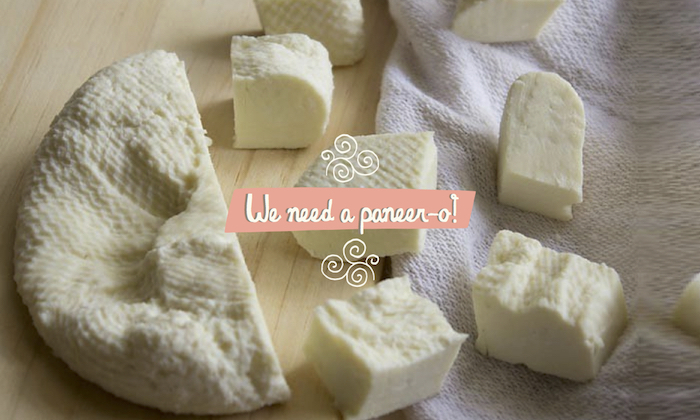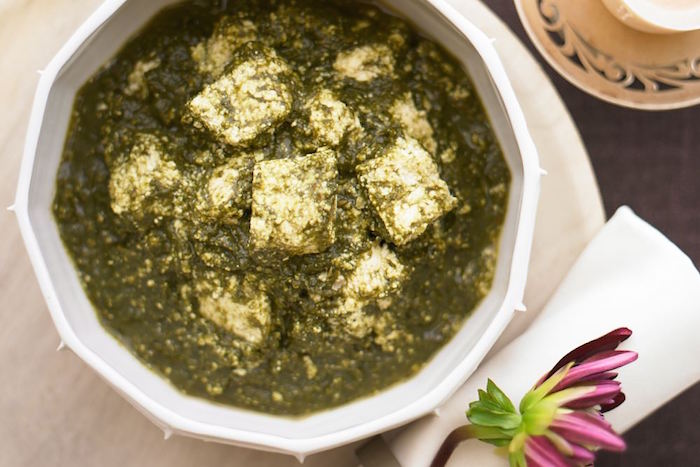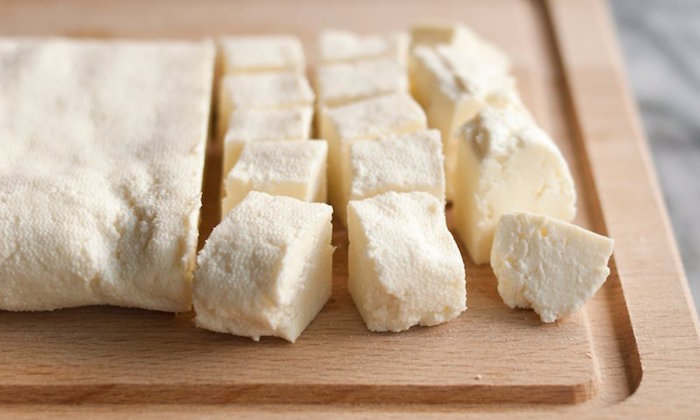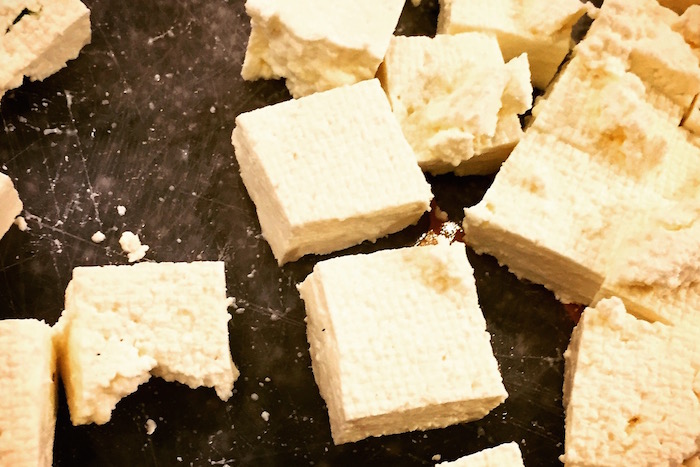
A healthy dose of green vegetables and delicious cheese? Palak Paneer is among our favourite Indian cuisine staples. Here’s a healthy homemade recipe, courtesy of Namita at Indian Spicebox!
Paneer is the stuff of Indian dreams… a fluffy, melt-in-your-mouth cheese that is a staple in Indian cuisine and highly favoured by vegetarians. Ubiquitous on Indian restaurant menus… palak paneer, paneer tikka, butter paneer, paneer bhurji, paneer pakora and so on, this mild Indian cheese soaks up all the flavours and curries that it’s dunked into or surrounded by. Paneer is to Indians what ricotta or mozzarella is to Italians. It is not cottage cheese, but the homemade version tends to look a bit similar. Unlike most other cheeses, Paneer doesn’t melt.

Paneer is super easy to make at home (more on that in a bit) or you can always purchase some from a grocery store. In India, we typically go around to the local dairy farm in our neighbourhood and buy super fresh paneer by weight. In Singapore, I discovered that you can buy fresh paneer at Moti Mahal on Serangoon Road in Little India. This shop also sells traditional Indian sweets.
The bigger grocery chains like Cold Storage sometimes stock Paneer alongside feta and other cheeses, but this paneer tends to be a bit chewy. I’ve even seen paneer on Redmart. My favourite commercial brands are the Indian ones such as Amul, Kohinoor and Nanak, found in the frozen section at Mustafa and other Indian specialty grocers. You can also find big hunks of Nanak paneer in the refrigerated section at Mustafa but I’ve found these to be chewier than their frozen counterparts. I recommend adding cubes of paneer, straight out of the bag/packet and into the curry. If it’s frozen, thaw it out but don’t fry it or boil the paneer pieces as it tends to make them hard and chewy.
Paneer is a tricky cheese and most of the time, I find that people end up having a sub-optimal paneer experience. The dream paneer scenario is a texture that is soft, melty, and creamy. When over-heated or fried, paneer tends to become tough and rubbery. Paneer must be handled with care and not over-heated or over-mixed in a curry, as it can not only harden but also crumble and fall apart easily as well. Oftentimes at many a sub-standard Indian restaurant, paneer cubes are chewier than chewing gum or just crumbly and hard. No fun.

There used to be a fun ad campaign that ran for years in the U.S. by the California Milk Advisory Board depicting happy cows and the tagline went “Great cheese comes from happy cows. Happy cows come from California.” Well, when it comes to Indian cheese (aka Paneer), I do believe that great paneer comes from happy cows and happy cows come from Punjab!
Alas, we do not live in Punjab and neither do we have access to freely roaming and happy, healthy Punjabi cows. But if you’re going to be making your own paneer at home, getting your hands on the best quality fresh or raw milk you can find is critical to a yummy, soft result. Choose full-fat, hormone-free cow milk or buffalo milk. Do not use UHT milk – many organic milks are ultra-pasteurized so read the label. In Singapore, I’ve had plenty success with Greenfield or Pura milk. Most commercially produced paneer is made from buffalo milk, which is much creamier and therefore results in a higher yield of milk curds.

How to make paneer
Making paneer at home is a breeze! All you need are:
1 litre of milk (full fat and not UHT-treated)
1¼ tablespoons of white vinegar
Cheesecloth for straining
Step 1: Heat up 1 litre of milk in a saucepan, on medium-high heat, continuously gently stirring to make sure the milk doesn’t stick to the bottom of the pan and burn.
Step 2: Once the milk starts to boil, quickly turn down the heat to a simmer, and add in 1 and ¼ tablespoons of white vinegar. Keep stirring.
Step 3: You should see the milk curdle and the curds separate from the whey. Keep gently stirring.
Step 4: When the whey (the water part left behind) is no longer milky coloured and you see a good paneer yield, turn off the heat.
Step 5: Using a fine mesh strainer, lined with cheesecloth (cheesecloth lining is optional), strain out the paneer. Discard the whey. Press down on the paneer with the back of a spoon or ladle to get all the water out and make the cheese firm. If using cheesecloth, you can bring in 4 corners and tie a tight knot.
Step 6: Leave the paneer in the strainer and set aside over a pot (for the water to keep dripping out) for at least 1-2 hours.
Step 7: Invert the paneer gently on a plate and cut into cubes with a wet knife. Your paneer is now ready to use! You can refrigerate the paneer for up to 2 days. Alternatively, you can also use ¼ cup of lemon juice to curdle paneer instead of vinegar. In my cooking classes we use vinegar and have seen more consistent results with it.
I say “use paneer” not eat paneer because, unlike ricotta or mozzarella, Paneer is typically used as an ingredient in a curry dish and not eaten on its own. I frankly think this is a real pity, and if you added some salt and lime to fresh homemade paneer and popped it on some toasted bread with tomato or cucumber, it would be a delicious snack for the family! But Palak Paneer with all its spinachy goodness is a delicious and nutritious family meal, and don’t worry if your homemade paneer turns out a bit crumbly, it’s still going to be soft and delicious. The process of making paneer at home is a delightful and fulfilling experience and one that I know your kids would love! And if you’re feeling creative, you might want to consider incorporating this fresh homemade cheese into other dishes as well. Paneer Pizza, paneer pasta, paneer on toast? Why not!? Cheese is cheese and kids love cheese!
![]()
Several paneer recipes, including the healthy ‘Palak Paneer’ and melt in your mouth ‘Paneer Pakoras’ can be found in Namita’s book. Her new book for children, The Magic Spicebox features several kid-friendly paneer recipes and can be purchased here.






 View All
View All





 View All
View All









 View All
View All




